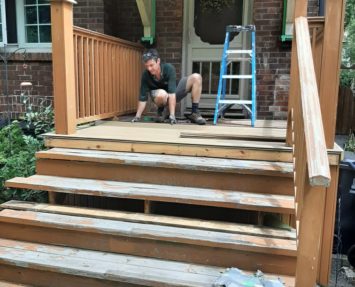As we continue to see the average life span increase, more and more retired Canadians choose to age in place, staying put in their treasured and beloved homes they know so well.
But with that comes a new set of challenges, as their homes are typically not built for their newly developed needs. By renovating your home with this in mind, you can achieve a more comfortable home that is safer to live in and provides added functionality.
So in this article we will cover some of the main benefits and concepts that those who age in place tend to choose. Enjoy!
Safety first
Most of us think of the many safety features when talking about renovating homes for aging in place. This can encompass larger renovations, such as ripping out the old steep stairs, and installing some friendlier and easier to traverse ones.
On a smaller scale, adding bars and handrails, lining the floor and stairs with non-slip materials and other similar features can further increase the safety of the homeowners. This will not only make the home safer, but also allow for more peace of mind, as the homeowners will not need to worry as much about potential falls or other accidents.
Comfort is important
Many older homeowners have been living in their house for decades, which often means that their homes are not as modern and energy efficient as they could be. Insulating the old and leaky roof will not only save on the energy bill, but also create a more comfortable home.
As we age in place, we tend to stay home during longer stretches than when we were working. This means air quality and natural light becomes even more important. These renovations can further improve the comfort, and are often relatively cheap compared to other home renovations.
Adapting to changing needs
Once you hit a certain age, it becomes troublesome to walk down the stairs at 3 in the morning just to go to the bathroom. Adding a bathroom next to your master bedroom can be a great addition that not only makes your home safer and more functional, it can also increase the value of your home when one day selling it.
On a similar note, many older Canadians are remodeling their homes to accommodate accessibility needs. This can include installing ramps such as ramps, wider doorways and lowering the countertops to make it easier for people in wheelchairs or with bad backs to move around.
Many bathrooms have a lip, or threshold, encompassing the shower area. But this can make it more difficult to enter the shower for people with a bad back or a reduced ability to walk. And it can completely block access for wheelchairs. By renovating your bathroom and adapting it to your new needs, you can keep living in your home that you love.
Final thoughts
Home renovations for older adults ultimately have the goal of making it possible to continue living a normal life, where the homeowners can stay independent and not rely on family members or outside help for their daily chores.
At HandyForce we have years of experience helping people stay independent for longer. So if you are considering a project to make life a little easier for yourself, feel free to contact us for a chat.




